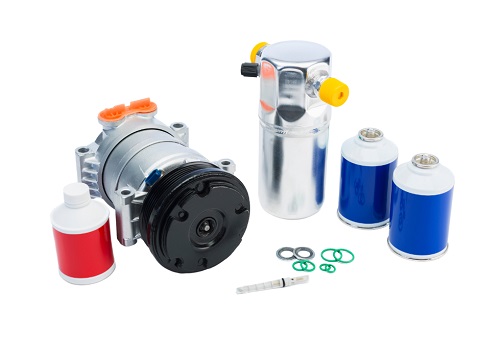Repair Costs

Understanding and Addressing Motor Vehicle A/C Repair Costs
Motor vehicle air conditioning systems, whether in cars, trucks, big rigs, buses, shuttles, or heavy equipment, operate under pressure. Even a small leak can lead to significant issues. To avoid escalating problems and higher repair costs, it’s crucial to address A/C issues promptly. This guide covers the essentials of motor vehicle A/C repair costs, common issues, and how to restore your cool air efficiently.
How Motor Vehicle Air Conditioning Systems Function
The intricacies of motor vehicle air conditioning systems are often overlooked. However, pressing the button to cool down your vehicle involves a complex process. To effectively address common A/C problems, it's helpful to understand how your vehicle’s A/C system operates.
At its core, a motor vehicle's A/C system works by converting a refrigerant from liquid to gas. During this transition, the refrigerant absorbs heat and humidity, leaving you with cool, dry air that enhances driving comfort.
Key Components of a Motor Vehicle A/C System
Modern motor vehicles typically have the following key components in their air conditioning systems:
Common Motor Vehicle A/C Problems
To effectively repair your air conditioning system, identifying the issue is crucial. While a mechanic can provide expert diagnosis, you can also perform some initial checks yourself. Here are common A/C problems, their causes, and potential repair solutions:
Lack of Cool Air
If your AC isn’t blowing cold air, or the air is only cool, consider these possible causes:
Repair Options: Start by cleaning the condenser and radiator, checking fan operation, and replacing the cabin air filter. If the issue persists, try recharging the system with an at-home kit ($50+). If these steps don’t resolve the problem, consult a mechanic for a detailed diagnosis.
Leaks
Leaks in the AC system can lead to reduced cooling efficiency and potentially damage the compressor. Early detection and repair are essential.
Repair Options: Inspect the AC system for leaks around fittings, seals, and hoses. If you're comfortable with DIY repairs, use an at-home leak detection kit ($145). Otherwise, a mechanic can diagnose and fix the leak, which may cost around $200 for diagnostics and an additional $350 for hose repair or replacement.
Loud Noises
A loud or clunking noise when turning on the AC could indicate a failing compressor clutch. Other symptoms might include:
Repair Options: You can either replace the compressor clutch ($450 to $850) or the entire compressor, which is more expensive. Professional installation for the clutch costs an additional $150 to $250.
Mildew Smell
A musty odor in your vehicle suggests mold or bacteria growth. This may be due to:
Repair Options: Begin by cleaning the vents with an AC vent and duct cleaner ($30). If the odor persists, a mechanic may need to perform deep cleaning, costing approximately $320 to $400.
Average MVAC Repair Costs
Repair costs for MVAC systems can vary based on the issue and vehicle type. On average, repairs range from $430 to $950, while a new compressor can cost between $1,300 and $2,500 or more.
Here’s a breakdown of typical AC repair costs:
Factors Influencing MVAC Repair Costs
Several factors can affect repair costs:
If you have any concerns about your motor vehicle’s AC system, feel free to reach out to mvac.pro for a free estimate.